New Businesses in Mountain Tourism Stand Out, Chinese and European Entrepreneurs Discuss the Prospects of Cooperation
On May 29, the "International Mountain Tourism Day (IMTD) 2024" Theme Events were successfully held in Nice, the capital city of the French department of Alpes-Maritimes, France. During the "Mountain Tourism Promotion & Sino-European Entrepreneurs Exchange Conference", Ji Xiaodong, President of China Chamber of Tourism; Sylvaine Linden, Founder of d‘ECOLOAD; Djibril Fofana, Secretary General of World Assocaiton for Hospitality and Tourism Education and Training (AMFORHT) delivered speeches.
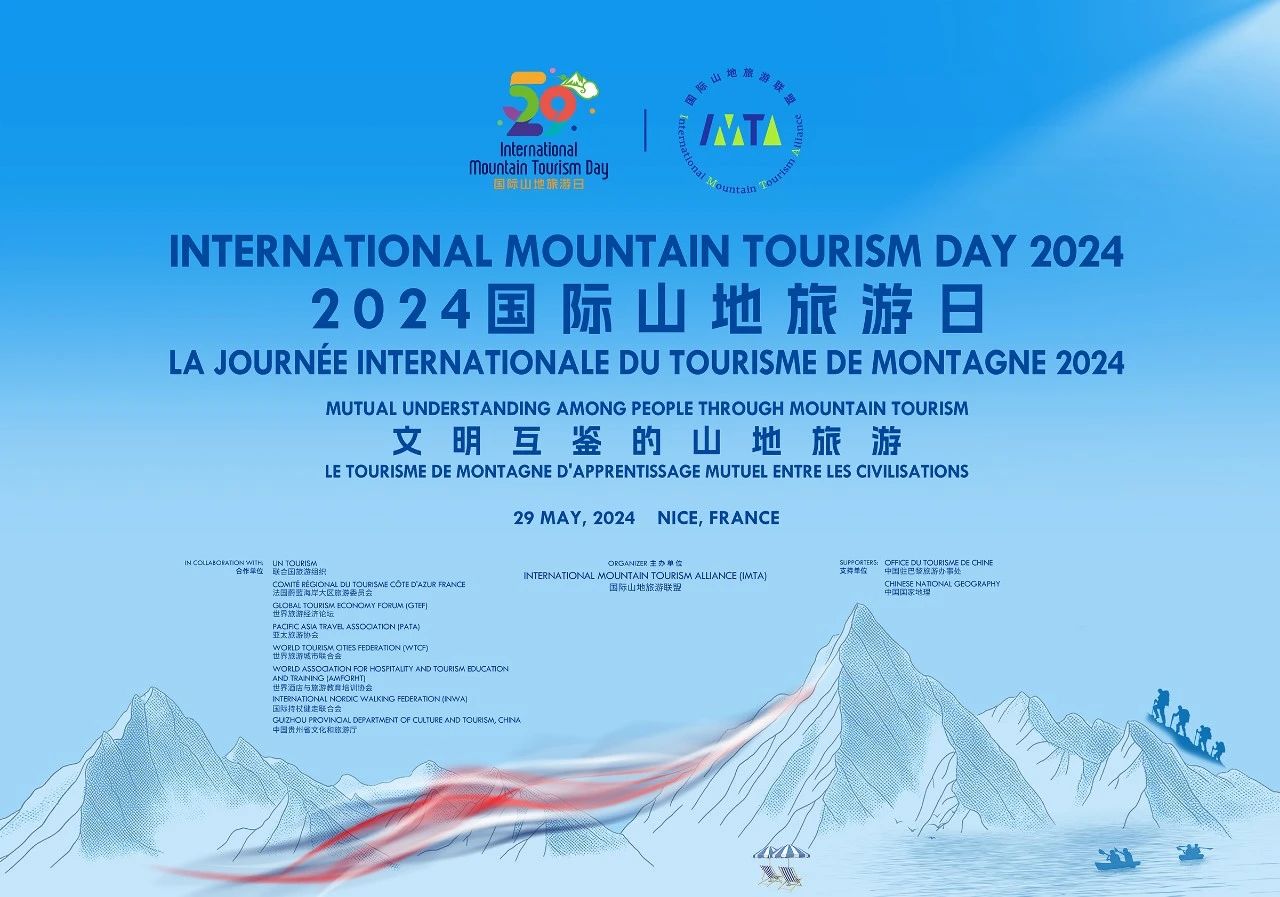
● Ji Xiaodong
President of China Chamber of Tourism

Today I have two identities, first, I am President of the China Chamber of Tourism (CCT), and at the same time, I am an investor in mountain tourism and a creator of mountain tourism attractions.
First of all, I would like to briefly introduce CCT. Founded in 2002, CCT is a national first-level corporate organization registered with the Ministry of Civil Affairs with the approval of the State Council, and directly under the All-China Federation of Industry and Commerce (ACFIC). CCT plays the role of a platform in bringing together all business entities and people involved in the tourism industry, and it relies on China's private cultural and tourism entrepreneurs to explore the innovative development of the tourism industry. Since its establishment, CCT has formed partnerships with global tourism business organizations, and through hosting the Global Tourism Economic Forum 10 times, it has promoted tourism exchanges and cooperation between China and the rest of the world, pushing forward the process of world peace through tourism development. CCT is also a sponsor member of the International Mountain Tourism Alliance (IMTA), with mountain tourism development as its key focus.
This year marks the 60th anniversary of the establishment of diplomatic ties between China and France. During a state visit to France in early May, Chinese President Xi Jinping published a signed article titled Carrying Forward the Spirit that Guided the Establishment of China-France Diplomatic Relations, Working Together for Global Peace and Development, encouraging the intensification of investment between the two countries and creating a new opportunity for them to deepen and expand pragmatic cooperation. The year 2024 is also the China-France Year of Culture and Tourism with various events in full swing, bringing a new opportunity for tourism cooperation and development between China and France. The theme event represents the positive attitude and confidence of China's tourism industry towards Sino-French tourism exchanges. Hopefully, we will fully leverage the opportunity to enhance mutual trust and mutual benefit, jointly promote the building of green and low-carbon mountain tourism destinations, realize mutual learning among mountain civilizations, and achieve peace of body and mind, a collision between nature and humanities, and the unity of diversity and commonality through diverse, unique and inclusive mountain civilizations.
The theme of my speech is "Green and low-carbon investment in mountain tourism destinations " and "low carbon" have been labels associated with the tourism industry since its birth, and they are also important attributes that differentiate it from other industries. These attributes determine that the industry is environmentally friendly and sustainable, adapting to the future trend of economic and social development. Having started practicing green low-carbon tourism development and investment earlier, European and American countries are in a leading position in this respect. For example, the French Alps have achieved low-carbon development of tourism through strengthening ecological and environmental protection in mountainous areas, promoting green transportation and other means. The Canadian Rockies have embarked on a path of sustainable development through strict environmental protection policies and efficient environmental education; Norway, while promoting eco-tourism and polar tourism, has used renewable energy and actively reduced carbon emissions from tourism, making green and low-carbon tourism an important pillar of its economy.

Source: Dali Yangbi Shimen Pass
The Chinese government has attached great importance to green and low-carbon development. The Opinions on Accelerating the Development of the Tourism Industry, released in 2009, advocated for low-carbon tourism; in September 2020, China proposed the policy of "carbon peaking" and "carbon neutrality", making carbon reduction an important goal for various industries. In 2021, China's Guiding Opinions on Accelerating the Establishment of a Sound Green, Low-Carbon and Cyclic Economic System took promoting the in-depth integration of agriculture, tourism and other industries as an important initiative. China's tourism industry is in a critical period of transformation and upgrading, and practicing green and low-carbon development in tourism investment and development has become a basic requirement for the tourism industry. On the one hand, we are achieving low carbonization of various tourism elements through technological upgrading, and promoting the concept of low-carbon development and management in tourism destinations, scenic areas, hotels and transportation, steering the tourism industry towards green and low-carbon development. On the other hand, low-carbon tourism is not only becoming a key focus in local government tourism planning, but also is being embraced by a growing number of tourists as the guiding principle of tourism behavior. Green and low carbon has become one of the core keywords for China's tourism industry to achieve self-renewal, drive industrial transformation and upgrading, and to integrate into global development. Mountain tourism has attracted the attention of many Chinese tourism investors and tourists due to its high dependence on natural resources, its inclusion of multiple means of low-carbon travel, and its suitability for the travel needs of diverse groups.
Now, I would like to share my suggestions for investment in green and low-carbon mountain tourism destinations,
Firstly, building unique mountain tourism destinations based on local resources
Shimen Pass of Mount Cangshan in Yangbi, Dali, which I am operating and developing, is a tourism complex that integrates rural revitalization, cultural tourism wellness, outdoor sports and commercial retail. Located on the western slope of Mount Cangshan in Dali, Yunnan Province, China, the project is an important part of Mount Cangshan Geopark, Cangshan-Erhai National Nature Reserve and Cangshan-Erhai National Scenic Area. By exploring the two-way in-depth integration of rural culture and tourism resources, promoting the transformation and upgrading of the rural tourism industry through cultural appeal, and boosting the rural cultural industry through tourism consumption, the project will be developed in conjunction with the rural revitalization of Guangming Village, Yangbi County.
Combining unique natural and cultural landscapes with rural eco-tourism, my company is centered on agricultural eco-tourism. It has integrated walnut culture, ethnic culture and the concept of ecological protection, optimized and integrated local tourism resources, and adopted a three-step brand strategy: introducing international and domestic competitions, exploring the local ecological culture of the county, and creating an "intangible cultural heritage + tourism" model. It has introduced international and domestic competitions to create new highlights, focused on developing the "sports + tourism" and "events + tourism" models, and successfully hosted permanent events such as the International Slackline Challenge, the International Food Festival and the China Go League. Relying on the intangible cultural heritage of the local Yi ethnic group, it has endowed the county's brands with new cultural connotations, created an "intangible cultural heritage + tourism" brand culture, and spared no efforts to enhance the cultural content of the project. It has promoted tourism through culture and invigorated culture through tourism to continuously stimulate new features for rural revitalization. A representative "five-five model" has taken shape in Yangbi Guangming Cloud Village, which encompasses the integration of "five practices" into the project: introducing tourism into villages, contributing land as equity, incorporating walnuts into cooperatives, marketing products online and integrating courtyards into the landscape. Additionally, it promotes "five cultures": historical culture, walnut culture, ethnic culture, agricultural culture and culinary culture.
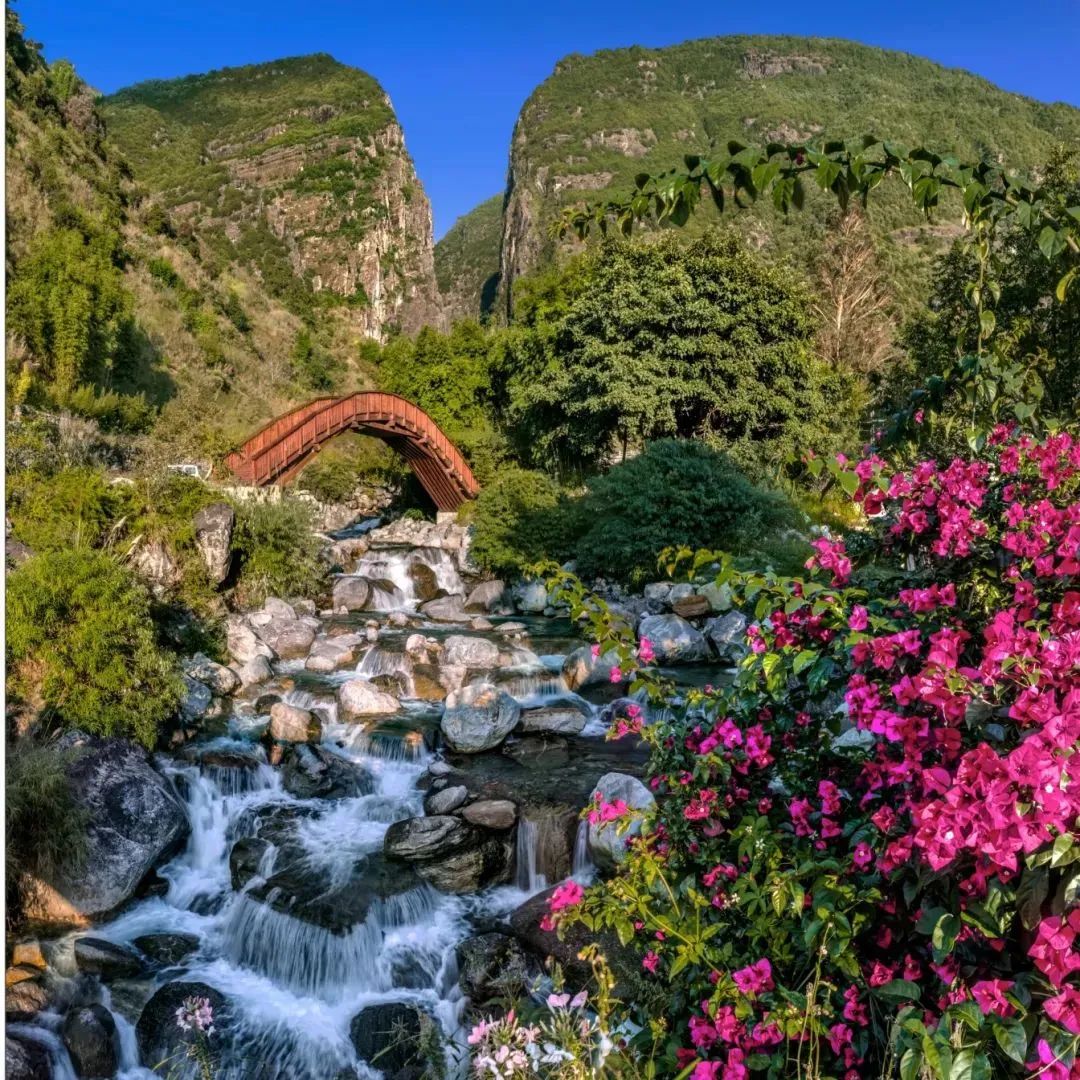
Source: Dali Yangbi Shimen Pass
Another distinctive feature of the Shimen Pass project is integrating wellness with tourism, and developing the wellness cultural tourism industry with unique hot spring resources. Wellness tourism, as a combination of tourism and healthcare, is gradually becoming a new hot spot for travel. In investing in green and low-carbon mountain tourism destinations, we should focus on the deep integration of tourism and wellness, and combine the natural ecological advantages of mountain tourism with the professional services of the wellness industry to create health resorts with unique appeal. We can rely on the unique natural environment and climatic conditions of mountains, to build wellness resorts, health trails, forest oxygen bars and other wellness facilities that provide comprehensive wellness services. Besides, by integrating traditional Chinese medicine, ethnic medicine and other distinctive resources, we can develop region-specific wellness tourism products to meet tourists' needs for physical and mental health, thereby creating mountain wellness tourism destinations that combine sports, leisure, health preservation and vacationing. This not only enhances the appeal of mountain tourism destinations, but also promotes the development of the local wellness industry and achieves a win-win between tourism and health.
The Shimen Pass project leveraging mountain resources to meet diverse tourism needs has created a tourism destination that not only highlights local features, but also offers a range of functions such as leisure tourism, hot spring wellness and outdoor sports. It is considered to hold significant reference value for mountain tourism investment and development.
Secondly, delivering enduringly popular mountain tourism projects
Globally, the tourism industry has witnessed highly successful cases that were popular for an instant, but only to fade away quickly. The development of mountain tourism hinges on not only "internet sensations" but also "sustained popularity." We should invest in mountain tourism with a long-term perspective and attitude, with an emphasis on lasting benefits and brand building. With the goal of building century-old scenic spots and products, we should focus on experience accumulation, service improvement and brand building, transforming our current products into the legacy for the future.
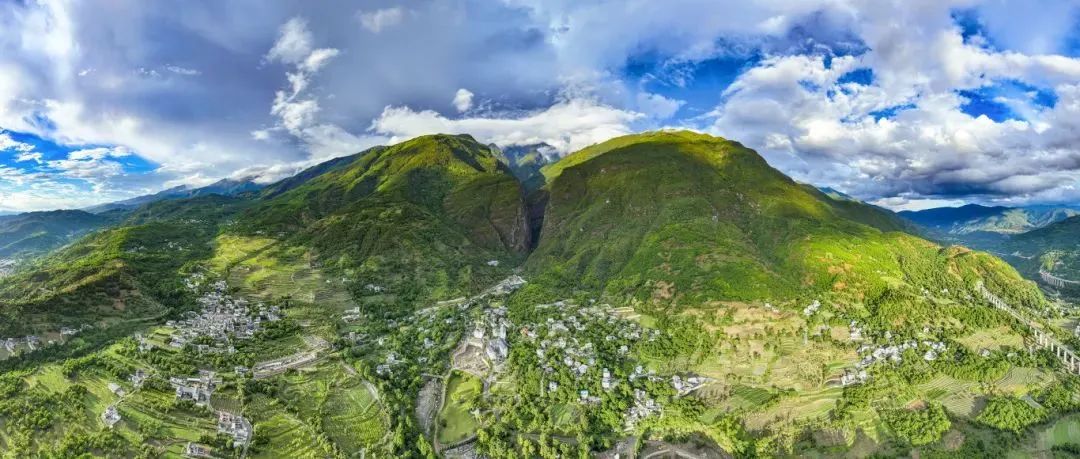
Source: Dali Yangbi Shimen Pass
On the one hand, we should focus on the long-term planning and sustainable development of tourism projects. To develop a compelling tourism project, we should take into account various aspects such as history, culture, storytelling, experience, entertainment and products, aiming to deliver an impressive travel experience and hit project, enhance the essence and appeal of culture, infuse the tourism industry with strong vitality and create a lasting impact.
On the other hand, we should focus on the brand building of tourism projects. To build unique and captivating tourism brands, we should concentrate on building brand IPs, marketing destinations and refining management models. This can be achieved by improving tourism services, enriching their cultural content and stepping up promotional efforts, as well as by organizing cultural and festival events to enhance the popularity and impact of our tourism offerings.
Besides, we should focus on balancing the economic and social benefits of tourism projects. While pursuing economic benefits, we should take into full account the interests of the local community and the environment to achieve sustainable and win-win development of tourism.
Lastly, integrating green and low-carbon technology and product innovation into the new development of mountain tourism
Green and low-carbon environmental technologies are taking center stage, bringing about revolutionary changes across industries. With the application of AR, cloud computing, 5G, metaverse, AI, IoT and other new technologies, tech-driven, information-based and digital cultural and tourism projects and products have emerged, creating new concepts and possibilities for the upgrading of the tourism industry from business forms to services. These new technologies and concepts are of great significance to the green and low-carbon development of mountain tourism. We should pay close attention to and actively explore the potential effectiveness of new technologies in enhancing the development and management of mountain tourism, and step up technology application and support, to make them essential backing for future mountain tourism.
This requires us to promote the extensive application of technologies such as clean energy, energy conservation and emission reduction, and intelligent control in the construction and management of mountain tourism facilities. For example, we should use clean energy sources like solar and wind energy to power tourism facilities; use energy-saving materials and equipment to reduce energy consumption; and achieve intelligent management and monitoring of tourism facilities through intelligent control systems. These technologies can not only reduce the energy consumption and emissions of tourism activities, but also improve the operational efficiency and service quality of tourism facilities. In terms of tourism product development and tourist guidance, technologies should emphasize environmental friendliness and sustainability. For instance, we can use eco-friendly materials to produce tourism souvenirs and gifts, promote green transportation, and encourage tourists to participate in waste sorting, afforestation and other activities.
China is making numerous attempts in this regard. In 2021, the Plan for Carbon Peaking and Carbon Neutrality of Meizhou Island was approved as China's first carbon peaking and carbon neutrality plan for national 5A-level tourist attractions. According to the plan, during the "14th Five-Year Plan" period, Meizhou Island will focus on integrating the zero carbon initiative with culture and tourism, transportation, livelihood, digital technology and new power systems. Key projects, such as renewable energy power generation, electrification of kitchens and transportation, improvement of building energy efficiency and construction of distinctive tourism routes, will be implemented to create an eco-civilization tourism island. The White Paper on Carbon Emissions of Shouxihu Scenic Area, released in 2022, called for efforts to offset carbon emissions and achieve carbon neutrality in the scenic area through afforestation, widespread use of clean energy technologies, reduction of energy consumption, purchase of carbon quotas and other measures.
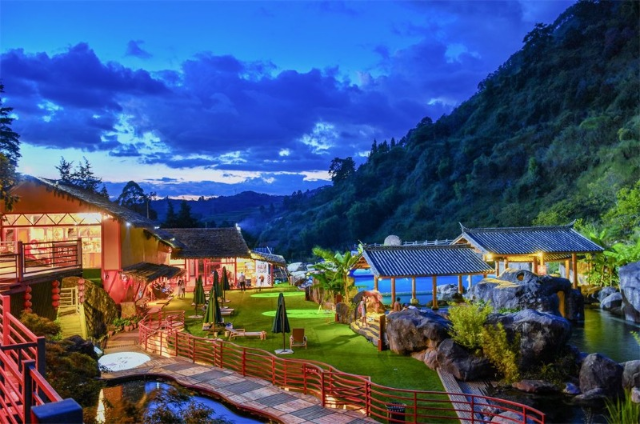
Source: Dali Yangbi Shimen Pass
It is worth mentioning that in 2023, CCT successively released two industrial standards for the creation and assessment of zero-carbon scenic areas and zero-carbon hotels respectively, aiming to improve the ability of scenic areas and hotels to offset carbon emissions generated during their operations to achieve carbon neutrality. These standards are designed to assist zero-carbon hotels, zero-carbon scenic areas and other market entities in their technological development. They aim to guide market entities and the industry towards more standardized practices, achieving sustainable development in low-carbon and eco-friendly operations for scenic areas and hotels. Hopefully, in practice, we will study and discuss the verification and implementation of these standards with mountain tourism companies worldwide, to steer technological innovation in mountain tourism.
Whether it is in China or other countries, a wealth of excellent experiences has been accumulated in green and low-carbon development, offering valuable lessons for reference. Environmental protection and low-carbon development is a common mission for governments and companies globally. It is hoped that CCT and IMTA will strengthen communication and exchanges with international tourism organizations, tourism companies and related institutions. Together, they can share advanced concepts and technologies, implement mountain ecological protection and restoration projects, and preserve the integrity and stability of mountain ecosystems. They can also jointly develop green and low-carbon mountain tourism standards and regulations, create transnational mountain tourism routes and products, and improve the quality and level of international mountain tourism to reach new heights!
● Sylvaine Linden
Founder of d‘ECOLOAD

As we all know, the number of electric bicycles has rocketed in recent years. More and more people are opting to cycle, whether for work or leisure. At the same time, mountain resorts aim to diversify activities to attract new visitors, retain existing ones, and support bicycle tourism. This is the foundation upon which ECOLOAD was founded in 2017.
So, driven by a passion for outdoor electric biking, a desire to contribute to environmental protection, and a strong commitment to helping everyone—whether for work or leisure, three friends with vastly different backgrounds came together to create this company.
Who are we?
ECOLOAD started by designing a prototype and tested it at high altitudes for a year in all weather conditions. This allowed us to refine the project into a high-performance solar-powered automatic charging station. We began marketing it in 2018 and expanded the product line.
ECOLOAD is built on strong values: the robustness and reliability of our products, proudly made in France. We respect the environment and ecosystem by choosing sustainable materials and partners. Most importantly, we listen to and support our customers with personalized and lasting projects.
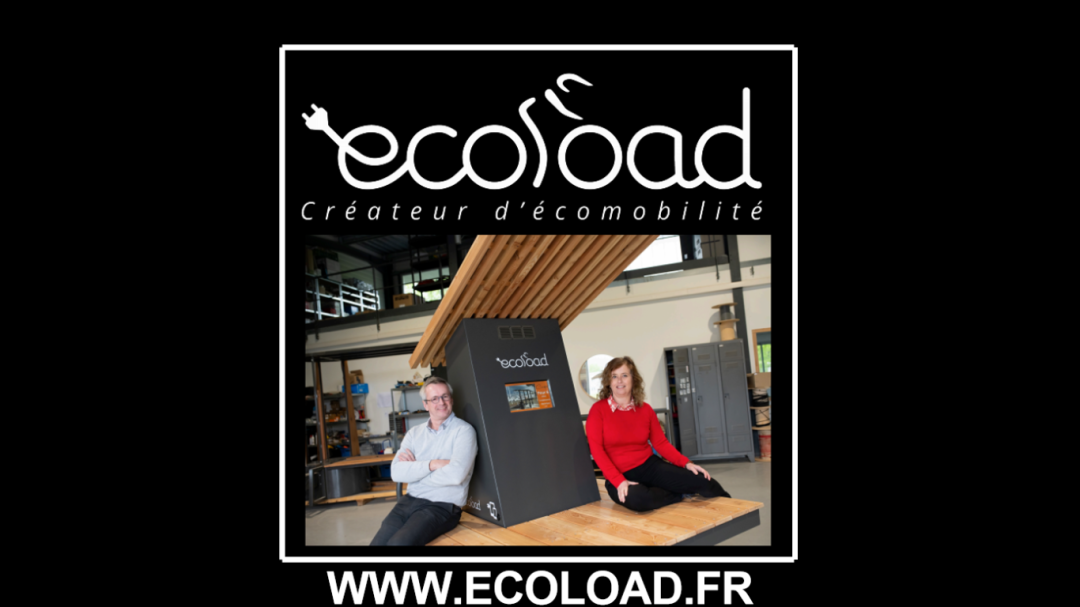
All our charging stations are fully autonomous, powered 100% by solar energy, or hybrid, meaning they use both solar energy and grid electricity. So, they can provide power regardless of the weather. The unused energy from electric bikes can also be redistributed to other uses, such as parking lot lighting.
We are proud to have received the “Made in France” label and to be part of the Coq Vert community. Every day, we are developing new solar charging stations in our workshop near Grenoble, adapting to present changes and anticipating future needs.

Our Solutions
Today, ECOLOAD offers two main series of solar charging stations: one for sports and leisure, and the other for businesses and communities. This allows our products to meet the travel needs of all two-wheel users under any conditions.
- Sports and Leisure Solar Charging Stations:
These stations can be installed anywhere, even in remote locations, without the need for civil engineering. All they need is a flat surface. Just make sure not to place them in the shadow of branches or buildings.
La Cabanavélo: This solar charging station can charge up to 3 electric bikes simultaneously and provides USB outlets for phone charging. It also offers comfortable seating for 3 to 4 people, allowing visitors to relax and enjoy the scenic views while waiting for their bikes to charge. It is particularly suitable for mountain environments or exceptional views.
La Teepee: This station can charge up to 4 electric bikes at once and provide USB outlets for phone charging. It provides wooden seating for visitors to relax while waiting for their bikes to charge. It is versatile and can be installed along bike paths, trails, or in village centers.
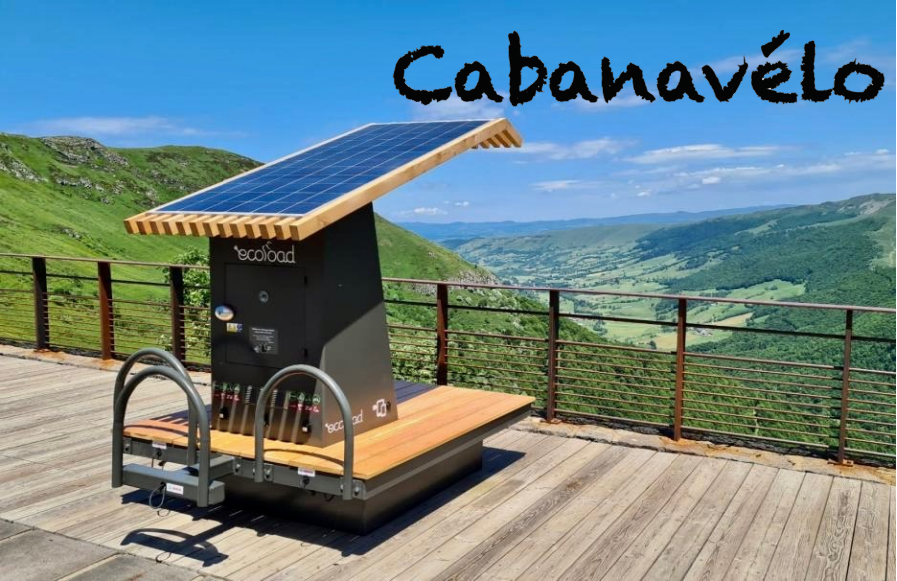
- Business and Community Solar Charging Stations:
La Teepee applies too.
La Canopée: This solar charging station works as modules. Each module can charge up to 6 electric bikes or electric scooters simultaneously. These modules can be assembled together to accommodate dozens of bikes. The modules can be open, semi-open, or closed, with full cover or transparent fencing.
Biklean Multifunction Service Terminal:
·Inflation function, via a manual or electric pump, for nearly all standard valves, up to 6 bars.
·Bike cleaning with a set of three specialized brushes, a spray gun, and low-pressure water to maintain the bike properly (high-pressure washing may damage the mechanical structure of bikes). Adding this feature to the Biklean terminal is optional for customers.
·Daily maintenance of bikes using tools recommended by professionals.
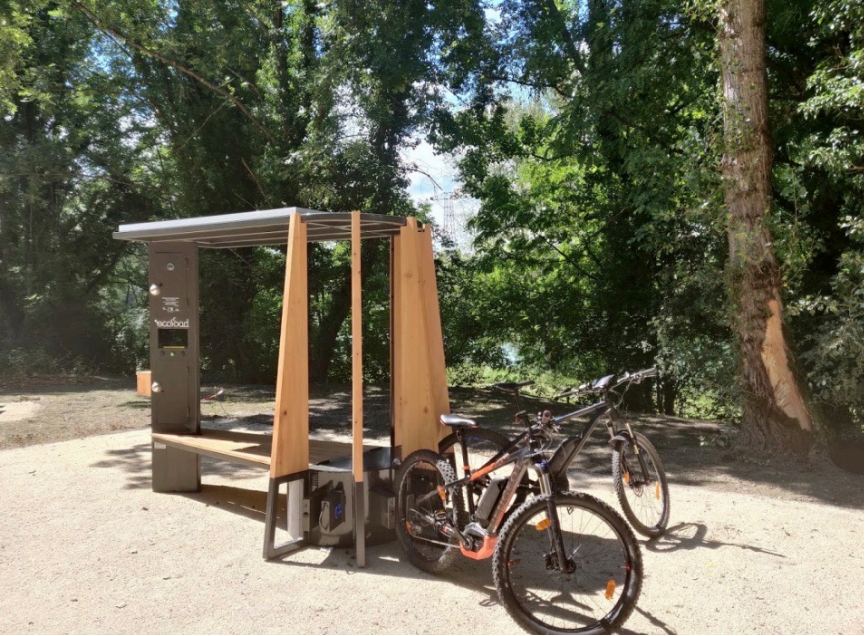
- Eco-Responsible Manufacturing:
Selective Materials:
·Wood: We use local wood from sustainably managed forests, treated with natural oils.
·Photovoltaic Panels: Our solar panels are manufactured in France, and we source our electrical equipment from France or Europe whenever possible.
·Structural Steel: The steel we use is produced in France and processed by local partners specializing in cold working.
·Powder Coating: This is also done by local partners.
·Wood Processing and Assembly: All wood processing and assembly of structures are done in our own workshop.
Design:
Our designs are intended to blend with nature, using environmentally friendly materials. The designs of the Teepee and Cabanavélo solar charging stations do not harm flora and fauna, as their installation requires no civil engineering.
We also have a design studio capable of customizing charging stations for personalized projects.
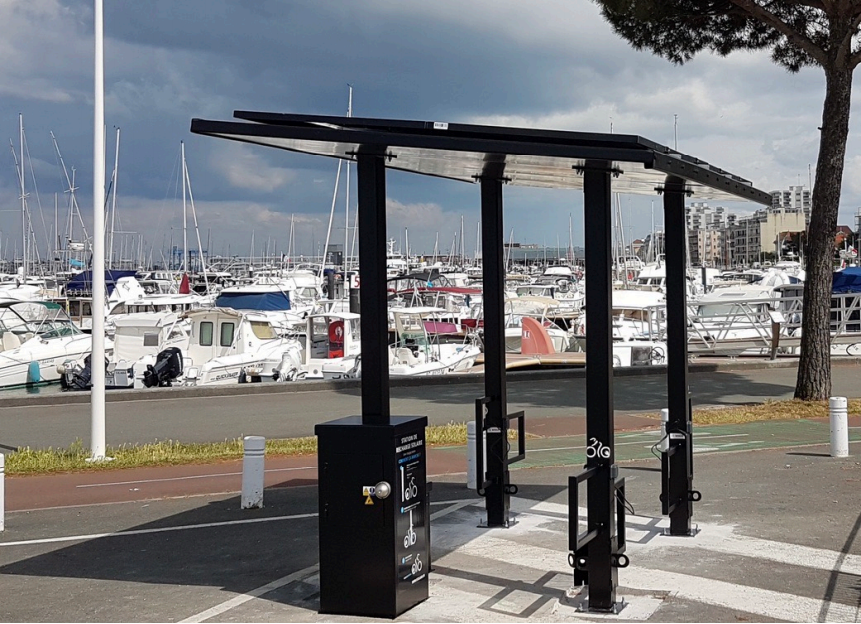
100% Solar or Hybrid Energy:
All our stations are fully autonomous (100% solar-powered) or hybrid, meaning they use both solar energy and grid electricity. This allows for a constant energy supply and saves costs by redistributing unused energy from e-bikes for other uses, such as lighting.
Installation:
Our solar charging stations can be installed in mountainous areas, towns, along bike paths, by the seaside, or within company premises. Each station is delivered and installed by our team, ready for immediate use.
Options:
·Chargers: To save users from carrying their chargers, our stations can be equipped with brand-specific chargers (Bosch, Yamaha, etc.). We also partner with Ongineer, a company that produces chargers with three different brand endpoints, which can be installed in our stations.
·Connected Stations: This option allows you to track the number of charges, CO2 savings, battery charge status, and more.
·Grid-Linked Stations: These stations combine solar and grid energy.
·Signage: Our design studio can work with you to create personalized signage that meets your needs.
- Our Services:
Support and Consultation: Our goal is not just to sell solar charging stations but to support our customers with widespread, accessible new energy transportation solutions. We work with you to meet your expectations, from initial planning to on-site implementation and maintenance.
Maintenance of Charging Stations:
Our after-sales service team is ready to help you with any problem. Most issues are simple to resolve (e.g., resetting a circuit breaker). You can call us first, and we’ll guide you through the necessary steps. We can also visit you if on-site repair is needed.
Technician Training:
With every installation, we provide on-site training for your technicians, explaining the operation, necessary procedures, and daily maintenance of our charging stations.
We also provide more extensive training so that your technicians are authorized to perform interventions on the stations independently.
Customized Projects
● Djibril Fofana
Secretary General of World Assocaiton for Hospitality and Tourism Education and Training (AMFORHT)
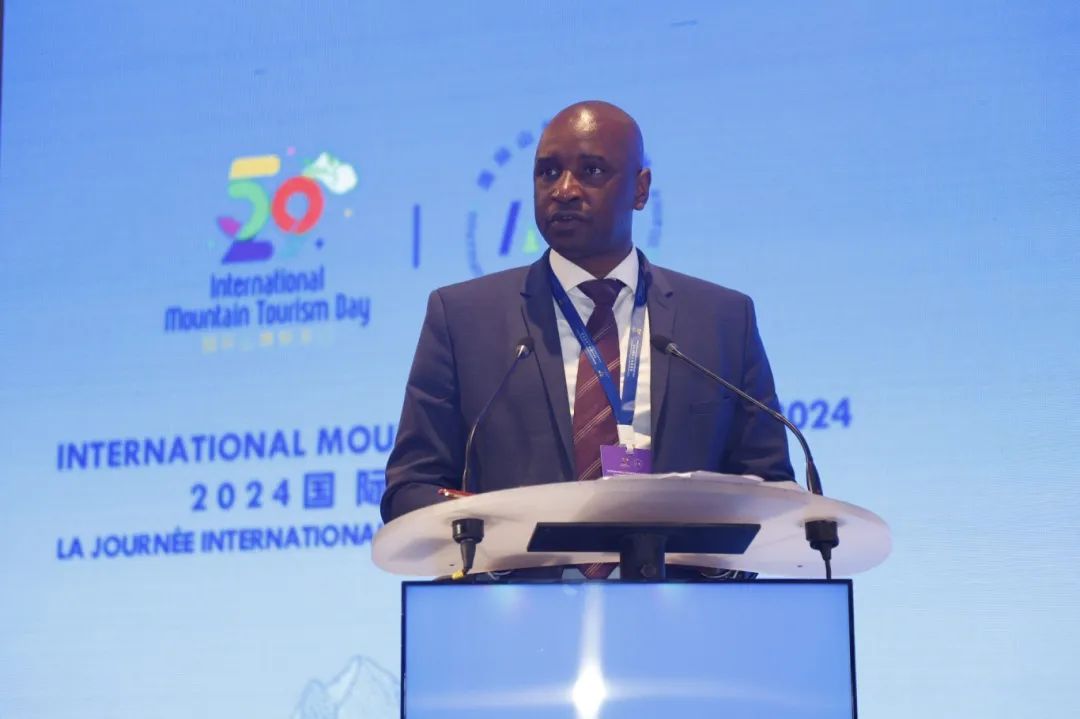
I’m an expert in the tourism and hospitality industry with over 25 years of experience. I currently work in the hotel and education sectors. My daily job involves supporting experts and helping them think about how to launch products, brands, and hotels. It’s all about training and support.
At Malyan SAS, we also work with organizations, helping them brainstorm project development. For example, we have many projects for investors or project developers to develop products, especially in Mexico. They are at the heart of the planning. We bring together experts and companies to ensure successful collaboration.
Now, education is a topic I particularly care about. Let me share my vision and my thoughts on what’s happening in mountain tourism and where we stand now. Experts, committees, scientists, politicians, and business leaders have all done extensive research. In short, all these people, organizations, and studies agree that mountain tourism will have a bright future.
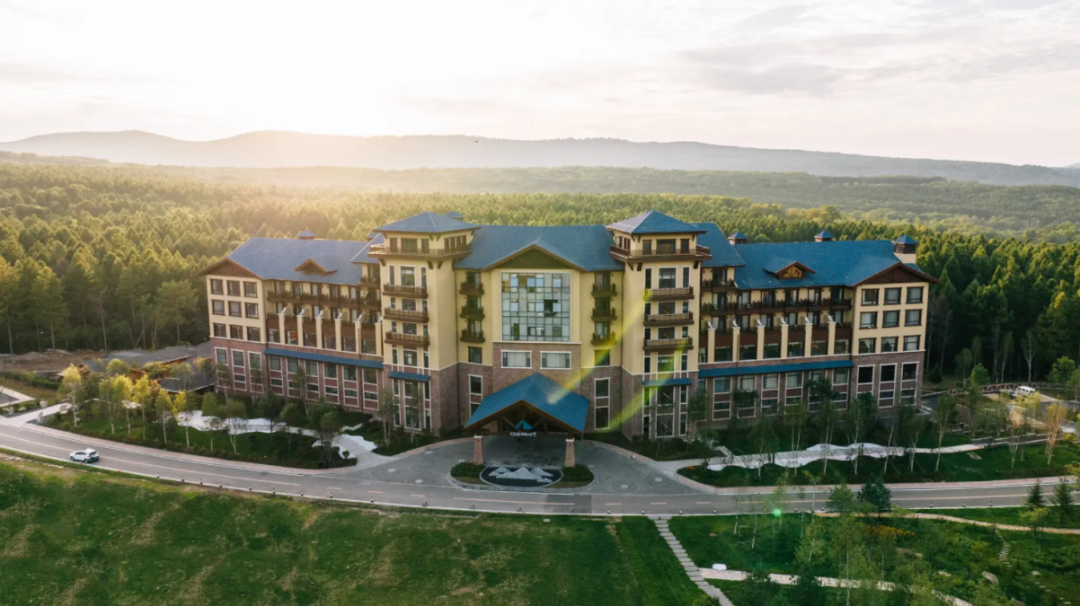
Club Med· Changbai Mountain
Some tourist spots have become increasingly popular even before adapting to climate change. This is inevitable. Once we understand it, we accept it and we must adapt to it. Some of the old practices must be changed and refined. Our customers will care more about climate change. I want to make it clear that it won’t be an isolated event. At Malyan SAS, we make brands and entrepreneurs understand that service quality is the core.
As a result, they ensure service quality. On the other hand, destinations guarantee the customer experience, which is different. The products will reach a certain quality level, but they are supposed to have the highest quality. Destinations are supposed to ensure the whole experience, from thinking about where we want to go to actually getting that experience. It is part of the destination’s responsibility.
Regarding mountain tourism, as you well know, this is something we truly rely on. Personally, I believe that diversifying tourism products and operators is the key to success. It’s not only a success for promoters but also for tourism destinations and people. When I say people, I mean those who will actually have this experience.
Everything about mountain destinations and their challenges has already been said, so I won’t repeat that. It has also been pointed out that despite the impact of climate change and how it affects our habits, tourism has almost returned to 2019 levels. In other words, according to the numbers released by the UNWTO this morning, in the first quarter of 2024, we’ve reached 97% of those levels, meaning we’re back to where we were pre-COVID. We’ve talked about infrastructure, products, and services, but I want to focus on people. It is a call to the IMTA organizers. Just a reminder, we are in a centennial town related to tourism, with a school called Paul Augier High School, just 300 to 400 meters from here, celebrating its 110th anniversary with profound experience in hospitality training. I suggest the IMTA organizers open the meetings to students, so they can learn about climate change and how it changes our behaviors.

Club Med· Changbai Mountain
All in all, I’d like to say that in terms of the dual mission of education and training, we must understand that training will be fundamental to us. For example, France is renowned not only for its tourism but also for its training quality. So, we aim to provide such high-quality training and services worldwide. As entrepreneurs, it’s our duty to support institutions in making such choices.
We’ve worked together on many projects. I’d like to focus on education projects. About ten years ago, we started student competitions that have been helping some hotel groups achieve success. I won’t name them here. These competitions not only discover future potential and talent but, more importantly, raise students’ awareness of sustainability, innovation, and digital issues. Many of the topics are about mountain tourism. So now, if we take a chance and support these young people in their training, it’s almost certain that in five, or at least ten years, we’ll see changes in how people choose destinations.
Of course, we offer both support and mentoring. Training will be a key factor because we address both individual and collective levels. Finally, we’ve already said a lot, so I’ll end by sharing a message of hope based on everything discussed this morning and throughout the day. Personally, I’ve been involved in many hotel development projects. I’ve studied many topics, especially in tourism, retail, and retail tourism. I believe the future of mountain tourism is very bright. Now, we must frankly address the reality of climate change. It’s inherent, and it’s here. We can’t pass the buck.
Text and photos source: IMTA
Editor Ⅰ: Zhang Wenwen
Editor Ⅱ: Wu Dan
Editor Ⅲ: Liu Guosong














